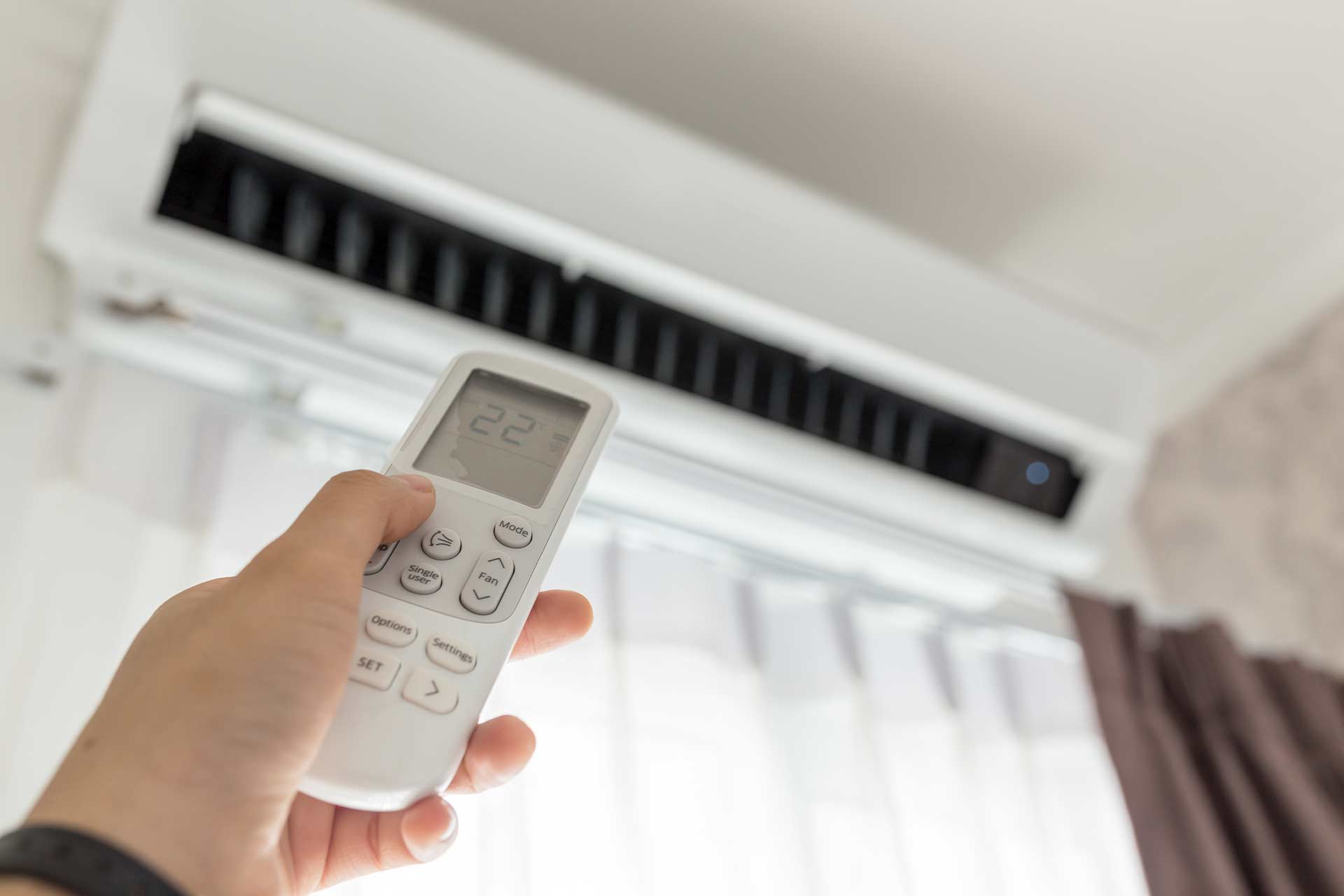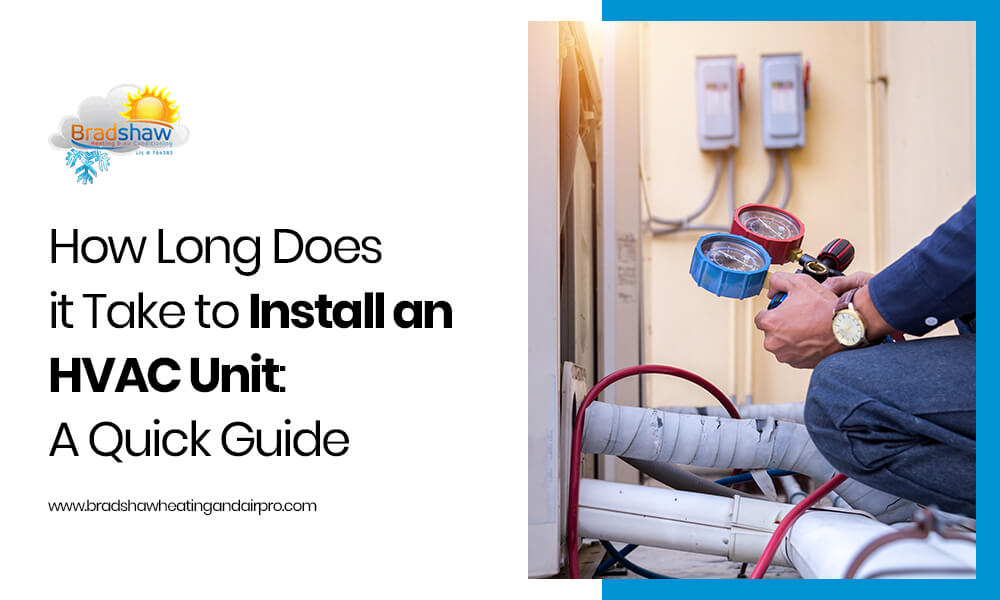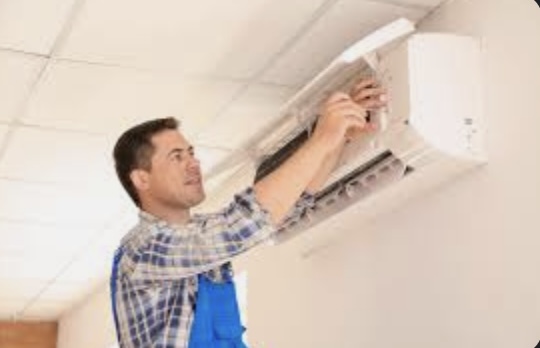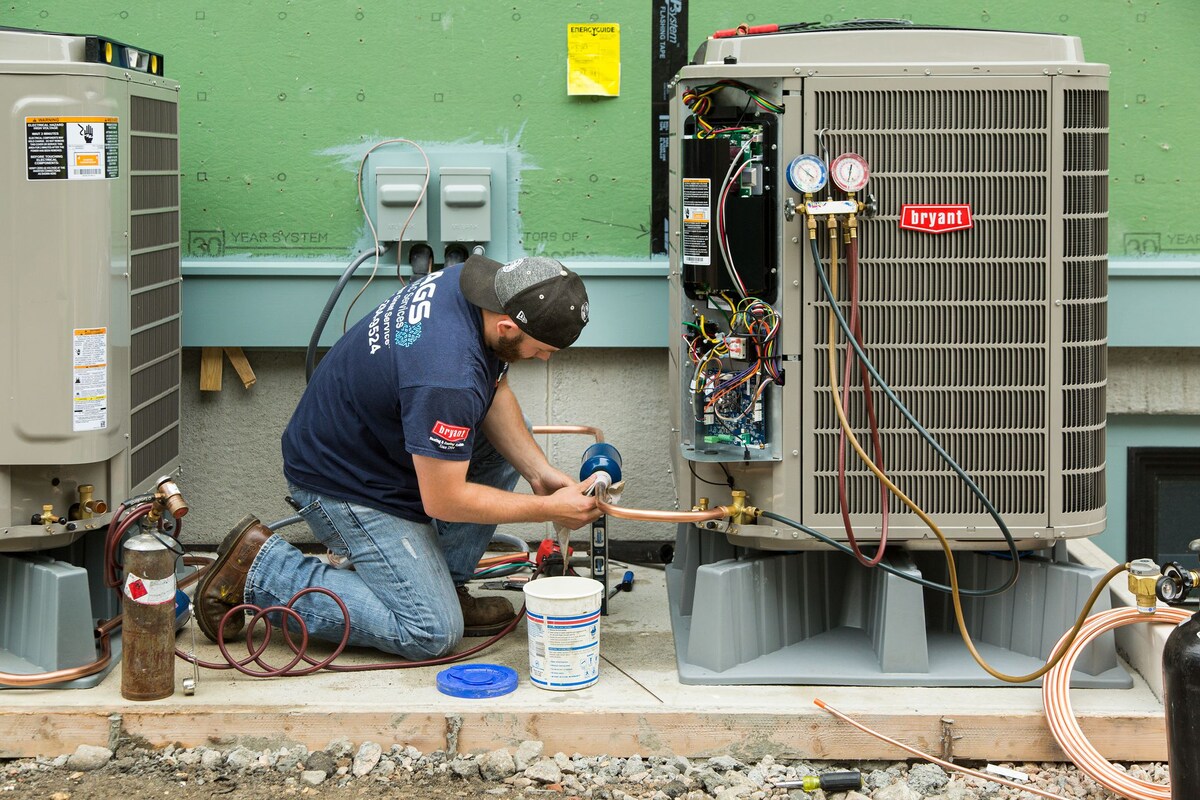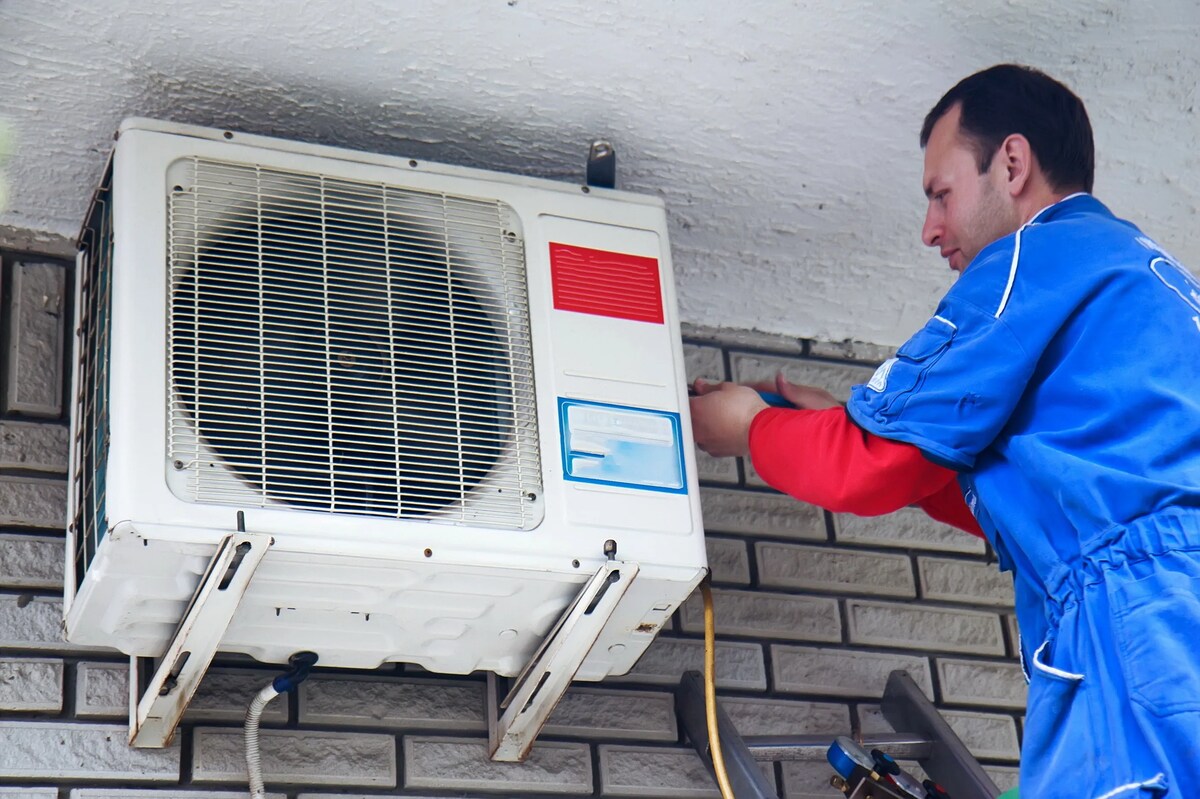How Long Does It Take To Install Ac Unit

Decoding AC Installation Time: A Comprehensive Guide
Replacing or upgrading your air conditioning system is a significant investment, and understanding the timeline for installation is crucial for planning and budgeting. The duration of an AC installation can vary widely depending on several factors. This guide breaks down those factors to give you a clearer picture of what to expect.
Factors Affecting AC Installation Time
Several key aspects influence how long your AC installation will take:
- Type of System: Window units, portable ACs, ductless mini-splits, and central AC systems all have drastically different installation times.
- System Complexity: Installing a completely new central AC system with ductwork will take longer than replacing an existing unit.
- Size and Accessibility: Larger units or those located in hard-to-reach areas will require more time to install.
- Existing Ductwork Condition: If your existing ductwork needs repair or replacement, it will add to the overall installation time.
- Permits and Inspections: Obtaining necessary permits and scheduling inspections can introduce delays.
- Contractor Experience: Experienced HVAC technicians can often complete installations more quickly and efficiently than less experienced ones.
- Weather Conditions: Inclement weather can sometimes delay outdoor work, affecting the installation timeline.
Average Installation Times for Different AC Systems
Here's a general overview of estimated installation times for various AC systems:
- Window Units: 30 minutes to 1 hour. These are the easiest to install, typically requiring only placement in a window and securing with brackets.
- Portable ACs: 15 minutes to 30 minutes. Minimal setup is needed, usually just attaching a vent hose to a window.
- Ductless Mini-Split Systems: 4 to 8 hours per indoor unit. These require mounting an indoor unit, installing an outdoor compressor, and connecting refrigerant lines. Multiple indoor units will extend the total installation time.
- Central AC Replacement (Existing Ductwork): 4 to 8 hours. This involves removing the old unit, installing the new unit, and connecting it to the existing ductwork and electrical system.
- Central AC Installation (New Ductwork): 1 to 5 days. This is the most complex and time-consuming, as it involves designing and installing the entire ductwork system, along with the AC unit itself.
Choosing the Right AC System: Brands, Features, and Ratings
Selecting the right AC system involves considering factors like cooling capacity (measured in BTUs), energy efficiency (SEER rating), noise level, and smart features. Here's a look at some popular brands and models:
Popular AC Brands and Models
Carrier
Carrier is a well-respected brand known for its reliability and innovation. Their Infinity series offers high SEER ratings and advanced features.
Pros: High efficiency, advanced features, durable construction.
Cons: Higher upfront cost.
Key Features: Variable-speed compressors, smart controls, quiet operation.
Example Model: Carrier Infinity 26 SEER Central Air Conditioner (model number varies by size).
Trane
Trane is another top brand recognized for its durability and performance. Their systems are built to withstand harsh conditions.
Pros: Excellent durability, reliable performance, wide range of models.
Cons: Can be noisy at higher speeds, some models lack advanced features.
Key Features: Climatuff compressor, all-aluminum coil, durable components.
Example Model: Trane XV20i Variable Speed Air Conditioner.
Lennox
Lennox offers a range of efficient and innovative AC systems. Their Dave Lennox Signature Collection is known for its premium features and energy savings.
Pros: High efficiency, innovative features, quiet operation.
Cons: High upfront cost, may require specialized maintenance.
Key Features: SilentComfort technology, solar-ready options, iComfort smart thermostats.
Example Model: Lennox XC25 Air Conditioner.
Mitsubishi Electric
Mitsubishi Electric is a leader in ductless mini-split systems, known for their energy efficiency and quiet operation.
Pros: Zoned cooling, energy efficiency, quiet operation, no ductwork required.
Cons: Higher upfront cost than window units, requires wall-mounted units.
Key Features: INVERTER technology, hyper-heating, zone control.
Example Model: Mitsubishi Electric MSZ-FS Deluxe Wall Mounted Indoor Unit.
Understanding Efficiency Ratings: SEER, EER, and HSPF
Understanding efficiency ratings is critical to making informed decisions. Here's a breakdown:
- SEER (Seasonal Energy Efficiency Ratio): Measures the cooling efficiency of an AC system over an entire cooling season. Higher SEER ratings indicate better energy efficiency. Modern systems typically range from 13 SEER to 28 SEER.
- EER (Energy Efficiency Ratio): Measures the cooling efficiency of an AC system at a specific operating point (typically 95°F outdoor temperature).
- HSPF (Heating Seasonal Performance Factor): This rating applies to heat pumps and measures their heating efficiency. A higher HSPF rating indicates better heating efficiency.
The Importance of Proper Sizing
Choosing the right size AC unit is crucial for optimal performance and efficiency. An undersized unit will struggle to cool your home, while an oversized unit can cycle on and off too frequently, leading to energy waste and poor humidity control. HVAC professionals use factors like square footage, insulation, climate, and window size to determine the appropriate BTU (British Thermal Units) rating for your home.
Permits, Inspections, and Local Regulations
Most jurisdictions require permits for AC installations, particularly for central AC systems. These permits ensure that the installation meets local building codes and safety standards. After the installation, an inspection is usually required to verify compliance. Failure to obtain necessary permits can result in fines and delays.
The Permitting Process
- Apply for a Permit: Your HVAC contractor typically handles the permit application process.
- Inspection: A local building inspector will examine the installation to ensure it meets code requirements.
- Approval: Once the inspection is passed, the permit is approved.
AC Installation Costs: A Detailed Breakdown
The cost of AC installation varies significantly depending on the type of system, brand, size, and complexity of the installation. Here's a general cost breakdown:
- Window Units: $150 - $800 (plus installation if needed)
- Portable ACs: $300 - $1000
- Ductless Mini-Split Systems: $3,000 - $8,000 per zone (installed)
- Central AC Replacement (Existing Ductwork): $4,000 - $10,000 (installed)
- Central AC Installation (New Ductwork): $8,000 - $20,000+ (installed)
These are just estimates, and actual costs can vary. Obtain multiple quotes from reputable HVAC contractors to get the most accurate pricing.
Factors Influencing Installation Costs
- Brand and Model: High-efficiency models and premium brands typically cost more.
- System Size (BTU): Larger units require more materials and labor.
- Ductwork Modifications: Repairs or modifications to existing ductwork will increase costs.
- Electrical Work: Upgrading electrical panels or wiring can add to the overall cost.
- Permit Fees: Local permit fees vary.
Warranties and Maintenance
Understanding warranties and maintenance requirements is crucial for protecting your investment. Most AC systems come with a manufacturer's warranty covering parts and components. Some manufacturers also offer extended warranties. Regular maintenance, such as cleaning filters and coils, is essential for maintaining system efficiency and preventing breakdowns.
Warranty Coverage
Typical warranties include:
- Parts Warranty: Covers the cost of replacement parts for a specified period (e.g., 5-10 years).
- Compressor Warranty: A separate warranty often covers the compressor, which is the most expensive component.
- Labor Warranty: Some warranties cover the cost of labor for repairs.
Maintenance Tips
- Change Air Filters Regularly: Dirty filters restrict airflow and reduce efficiency.
- Clean Coils: Dirty coils can also reduce efficiency.
- Inspect Ductwork: Check for leaks or damage.
- Schedule Professional Maintenance: Annual tune-ups by a qualified HVAC technician can help prevent problems and extend the life of your system.
Finding a Reputable HVAC Contractor
Choosing the right HVAC contractor is essential for a successful installation. Look for contractors with:
- Proper Licensing and Insurance: Ensure the contractor is licensed and insured in your state.
- Positive Reviews and References: Check online reviews and ask for references from previous customers.
- Experience and Expertise: Choose a contractor with experience installing the type of system you're considering.
- Clear and Detailed Quotes: Get written quotes that clearly outline the scope of work, costs, and warranty information.
By carefully considering these factors, you can make an informed decision and ensure a smooth and efficient AC installation process.


